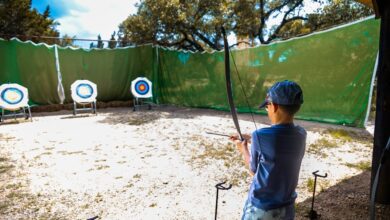What Is Your Tent or Rain Jacket Made From? (2025): Dyneema, Silpoly, X-Pac

What Is Your Tent or Rain Jacket Made From? (2025): Dyneema, Silpoly, X-Pac
Estimated Reading Time: 5-6 minutes
- Dyneema Composite Fabric (DCF) offers unparalleled strength-to-weight for ultralight gear, being inherently waterproof but high-cost and prone to crinkling noise.
- Silicone-coated Polyester (Silpoly) provides a balanced, value-driven performance with superior UV resistance and minimal sag when wet, making it a reliable workhorse.
- X-Pac is a multi-layered laminate built for extreme durability and absolute waterproofness, ideal for demanding conditions but at a higher weight and cost.
- Choosing the right fabric depends on your adventure profile, priorities (weight, durability, cost), and typical weather conditions.
- Beyond material, gear design, construction, and seam sealing are equally crucial for optimal performance in the outdoors.
- The Material Revolution: Why Fabric Technology Matters
- High-Tech Fabric Deep Dive: Dyneema, Silpoly, and X-Pac
- Choosing Your Armor: Actionable Steps
- Conclusion: Gear Up for Your Next Adventure
- Frequently Asked Questions
The wilderness demands respect and preparedness. When you venture into the great outdoors, your gear is your first line of defense against the elements. From a sudden downpour to a chilly night under the stars, the fabric of your tent or rain jacket plays a pivotal role in your comfort, safety, and overall experience.
Gone are the days when heavy cotton canvas was the only option. Today, material science has revolutionized outdoor equipment, offering an incredible array of high-performance fabrics. Choosing the right material for your specific adventure can be the difference between a memorable trip and a miserable one. Understanding these advanced textiles is crucial for any serious adventurer looking to optimize their kit for weight, durability, and weather protection.
Outdoor gear is made from the most high-tech fabric in the world. We explain how Dyneema, silpoly, and X-Pac keep you dry in the wilderness.
The Material Revolution: Why Fabric Technology Matters
Modern outdoor enthusiasts seek gear that is not only robust and waterproof but also incredibly lightweight and packable. This trifecta of properties drives innovation in textile engineering. Manufacturers are constantly pushing the boundaries to create fabrics that resist tears, shrug off water, block wind, and yet barely register on the scale. These advancements translate directly into a better user experience, allowing for longer treks, lighter loads, and greater peace of mind in challenging conditions.
Each specialized fabric brings a unique set of characteristics to the table, optimized for particular applications. Whether it’s the need for extreme ultralight performance, balanced durability and value, or the ultimate in rugged, waterproof construction, there’s a modern material designed to meet that demand. Let’s dive into some of the most prominent contenders reshaping the landscape of outdoor gear.
High-Tech Fabric Deep Dive: Dyneema, Silpoly, and X-Pac
Dyneema: The Ultralight Strength Champion
Dyneema, specifically Dyneema Composite Fabric (DCF), is a revolutionary material that has fundamentally changed the ultralight backpacking world. Often referred to by its former brand name, Cuben Fiber, DCF is not a woven fabric in the traditional sense. It’s a laminate material composed of ultra-high-molecular-weight polyethylene (UHMWPE) fibers laid in a crisscross pattern and sandwiched between two layers of thin polyester film.
This unique construction gives DCF an astonishing strength-to-weight ratio, making it one of the strongest ultralight materials available. It’s inherently waterproof because it doesn’t absorb water like traditional fabrics; instead, water beads up and rolls off its non-porous surface. DCF excels in tear resistance and has minimal stretch, ensuring structural stability even when wet. Its common applications include ultralight tents, tarps, backpacks, and stuff sacks where minimizing weight is the absolute priority.
Real-World Example: The Sierra Storm
Imagine Sarah, deep in the Sierra Nevada mountains, when an unexpected thunderstorm rolls in. As the sky darkens and rain begins to fall, she quickly pitches her ultralight Dyneema tent. While other hikers might be wrestling with their sagging nylon tents soaking up water, Sarah’s DCF shelter remains taut, shedding water effortlessly. The distinctive crinkle of the fabric is a small price to pay for a dry, secure night, knowing her tent won’t gain a pound from absorbed moisture.
The primary drawbacks of Dyneema include its high cost and a distinct “crinkly” sound and feel. While incredibly strong for its weight, its abrasion resistance isn’t as high as some woven nylons, meaning it can be susceptible to damage from sharp objects or rough surfaces if not handled with care. Despite these considerations, for those counting every gram, Dyneema remains the pinnacle of ultralight performance.
Silpoly: The Modern Workhorse with Balanced Performance
Silpoly, short for silicone-coated polyester, represents a significant evolution from the traditional silnylon (silicone-coated nylon) that dominated the lightweight gear market for years. It’s a woven polyester fabric impregnated or coated with silicone on both sides, making it highly waterproof and robust.
The key advantage of silpoly over silnylon lies in polyester’s inherent properties. Polyester absorbs very little water, unlike nylon, which is known to absorb a small percentage of its weight in water. This means silpoly fabrics stretch and sag less when wet, maintaining their tautness and structural integrity in adverse weather. This characteristic is particularly beneficial for tents and tarps, preventing annoying slack and pooling water during rain.
Silpoly also offers excellent UV resistance, meaning it degrades slower under prolonged sun exposure compared to nylon. It provides a superb balance of weight, durability, and waterproofness at a more accessible price point than Dyneema. This makes it an incredibly popular choice for a wide range of gear, including lightweight tents, tarps, hammock tarps, and backpack covers, appealing to hikers who want reliable performance without the premium cost of DCF or the weight of traditional fabrics.
X-Pac: The Laminated Powerhouse for Ultimate Durability
X-Pac is a family of advanced laminate fabrics renowned for their exceptional strength, waterproofness, and unique aesthetics. Unlike single-layer woven fabrics, X-Pac is a multi-layered material, typically consisting of a durable nylon face fabric, a polyester X-Ply yarn reinforcement (the distinctive diamond pattern), a waterproof film (often PET), and sometimes a light taffeta backing for a cleaner interior finish.
The X-Ply reinforcement is the secret to X-Pac’s incredible tear resistance and dimensional stability. By laying strong polyester fibers at a 45-degree angle, the fabric resists stretching and tearing from multiple directions, making it incredibly robust. The integrated waterproof film ensures complete waterproofness, which doesn’t degrade with wear like a coating might. While often associated with backpacks and specialized bike bags due to its stiffness and extreme durability, X-Pac technology, or similar multi-layer laminates, is increasingly finding its way into premium expedition-grade rain jackets and reinforced sections of high-end tents (like floors or high-stress points) where uncompromising tear resistance and waterproofness are critical.
The advantages of X-Pac include its unparalleled strength-to-weight for its durability class, absolute waterproofness, and resistance to stretch. It offers incredible peace of mind in the most demanding environments. However, it is generally heavier and stiffer than Dyneema or Silpoly, and its advanced construction contributes to a higher price point. For situations where ultimate protection and long-term durability are paramount, X-Pac and similar laminate constructions stand out.
Choosing Your Armor: Actionable Steps
Navigating the world of advanced fabrics can be daunting, but by following a few steps, you can make an informed decision that perfectly matches your adventure style.
1. Assess Your Adventure Profile and Priorities
Before looking at specific fabrics, consider what kind of activities you’ll be doing. Are you an ultralight thru-hiker where every gram counts? A weekend backpacker seeking a balance of durability and value? Or an expeditioner who prioritizes bombproof protection above all else? Your typical climate and budget are also critical factors. If you frequently encounter harsh weather, waterproofness and durability will be higher priorities than if you mostly hike in fair conditions. Similarly, your budget will largely dictate which premium materials are within reach.
2. Research Specific Gear Designs, Not Just Materials
Remember that the material is only one part of the equation. A tent or jacket’s design, seam sealing, zipper quality, and ventilation systems are equally important. A top-tier fabric in a poorly designed product will still underperform. Read reviews, watch videos, and look for detailed specifications from reputable brands. Understand how the material is integrated into the product – for instance, a Dyneema tent’s pitch method or an X-Pac rain jacket’s seam construction.
3. Understand the Trade-Offs and Prioritize Your “Must-Haves”
There’s no single “best” fabric; there are only fabrics best suited for specific needs. Dyneema offers unmatched weight savings but comes at a higher cost and unique feel. Silpoly provides excellent all-around performance and value with minimal sag. X-Pac delivers extreme durability and waterproofness but is heavier and stiffer. Clearly define what attributes are non-negotiable for your gear and be prepared to make informed compromises on others. Don’t fall for marketing hype; focus on the practical benefits and limitations of each material for your personal use case.
Conclusion: Gear Up for Your Next Adventure
The evolution of outdoor fabrics has empowered adventurers with more choices than ever before. Dyneema, Silpoly, and X-Pac each represent the pinnacle of modern textile engineering, offering distinct advantages for different outdoor pursuits. Whether you’re chasing the ultimate ultralight setup, seeking a reliable and balanced performer, or demanding unparalleled durability for extreme conditions, there’s a high-tech fabric designed to keep you dry and comfortable.
By understanding the unique properties and applications of these materials, you can confidently select gear that will perform when it matters most, allowing you to focus on the beauty of the wilderness rather than worrying about the weather. Invest wisely in your gear, and it will serve you faithfully on countless adventures to come.
Frequently Asked Questions
What are the main advantages of Dyneema over traditional tent fabrics?
Dyneema Composite Fabric (DCF) offers an exceptionally high strength-to-weight ratio, making it ideal for ultralight gear. It’s inherently waterproof, doesn’t absorb water (preventing weight gain and sag), and boasts excellent tear resistance. These properties make it superior for minimizing pack weight while ensuring protection in the wilderness.
Why is Silpoly often preferred over Silnylon?
Silpoly (silicone-coated polyester) is preferred over Silnylon primarily because polyester absorbs significantly less water than nylon. This means Silpoly fabrics stretch and sag less when wet, maintaining a taut pitch for tents and tarps. Additionally, Silpoly offers better UV resistance, prolonging the lifespan of gear exposed to sunlight.
What makes X-Pac fabrics so durable for outdoor gear?
X-Pac’s durability comes from its multi-layered laminate construction, which includes a robust face fabric, a unique polyester X-Ply yarn reinforcement laid at a 45-degree angle, and a waterproof film. This structure provides exceptional tear resistance from multiple directions, prevents stretch, and ensures absolute waterproofness, making it incredibly resilient against abrasion and harsh conditions.
How do I choose the best fabric for my specific outdoor activity?
Choosing the best fabric involves assessing your adventure profile and priorities. Consider factors like desired weight (ultralight, lightweight, robust), required durability (weekend trips vs. expeditions), typical weather conditions (rain, sun, wind), and budget. For ultralight, Dyneema; for balanced performance and value, Silpoly; for extreme durability, X-Pac.
Is the cost of premium fabrics like Dyneema and X-Pac justified?
The higher cost of premium fabrics like Dyneema and X-Pac is often justified by their specialized performance benefits. Dyneema offers unmatched weight savings, critical for long-distance hikers. X-Pac provides extreme durability and waterproofness for demanding environments. For adventurers prioritizing these specific, high-performance attributes, the investment can significantly enhance safety, comfort, and the longevity of their gear.





